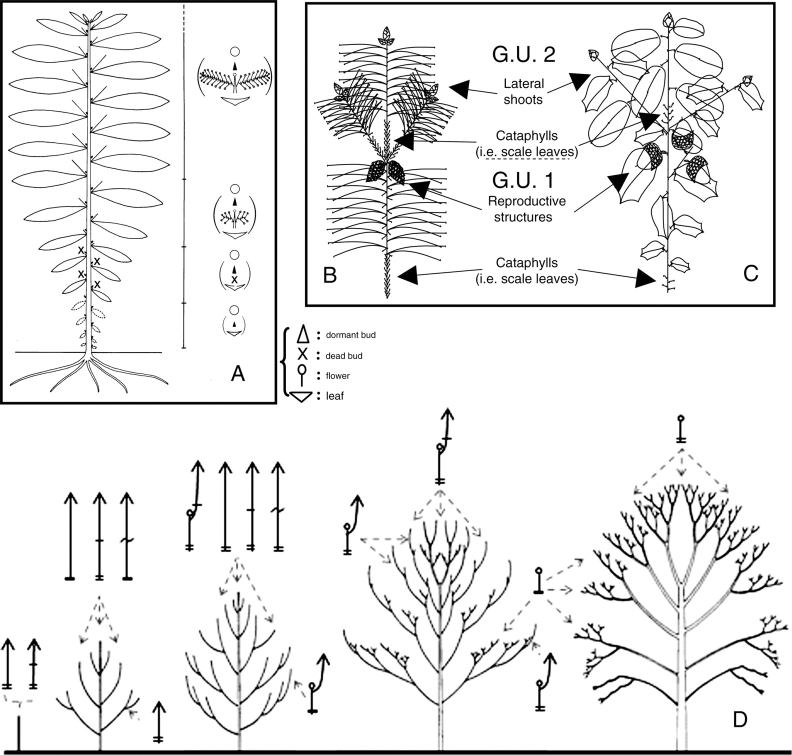Fig. 29.
Differentiation processes and levels of organization in seed plants. (A) Coordinate and related trends in leaf and internode structure and in size and nature of foliar axil products along the unique axis of a herbaceous tropical plant native to French Guyana: Noisettia longifolia (after Barthélémy, 1988). (B and C) Differentiation at the level of the growth unit (G.U.) and annual bicyclic shoot in the Mediterranean trees Pinus halepensis (B) and Quercus ilex (C, after Caraglio and Barthélémy, 1997, see also Fig. 6). In both cases, differentiation at the level of each growth unit is marked by the nature of foliar organs (cataphylls vs. photosynthetic leaves) or axillary products (dormant bud vs. lateral shoot or vs. reproductive organs) for G.U.1. For both species, at the bicyclic annual shoot level, differentiation between the two successive G.U.s (i.e. G.U.1 vs. G.U.2) is revealed by the presence of reproductive structures and lateral shoots on G.U.1 only and by differences in leaf size and structure according to their bearing G.U., i.e. G.U.1 vs. G.U.2. (D) Differentiation at the comprehensive level of the whole ontogeny of a plant is illustrated in the case of common walnut (Juglans regia, after Sabatier, 1999) by the architectural trend from young to mature tree (left to right) and by the associated annual shoot structure trends (diagrammatically represented here at each stage for the main stem and some lateral branches). Break symbol (=), winter growth stop; – or ∼, intra-annual growth stop or decrease in growth speed; o, terminal female flower.

